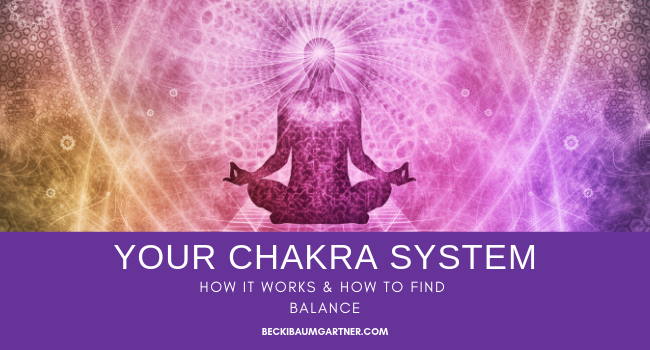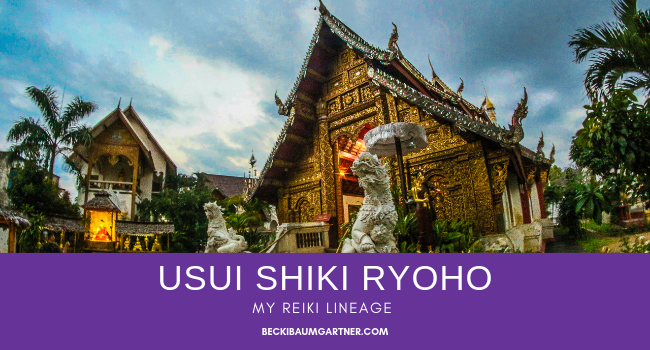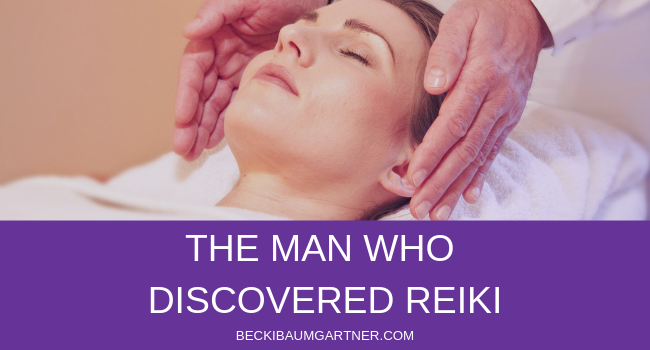Are you interested in Reiki?
People interested in Reiki sometimes have trouble understanding just what it is.
In this article, I’ll give you an overview of just what Reiki is and how it works.
Then, you’ll be better able to decide if Reiki is the right path for you!
I’m Interested in Reiki! Just What is It?
People interested in Reiki sometimes have trouble understanding just what it is.
After reading this article, you should have a pretty good understanding of the basics.
Ok, let’s get started!
Reiki is a healing modality originating in Japan in the late 1800′s with a man named Dr. Mikao Usui.
Reiki’s roots are in Japanese culture.
The word “Reiki” is of Japanese origin and refers to the Universal Life Force.
The name originates from the Japanese concepts of REI (spirit) and KI (life force, energy)
Reiki is also described as the Japanese word for “universal energy”.
Traditional Eastern healing focuses on the “KI” (also known as ”Qi”, “Chi”, or “Prana”) as a method of bringing the life force energy back into balance.
The word Rei, in Japanese, means “universal life”, and Ki, means “energy” – together “universal life energy” is the basis for the art of Reiki.
If you are interested in Reiki you need to know it is not a massage or meditation.
Instead, it is a transfer of energy between a practitioner and a receiver through handwork.
Kind of like the practitioner “recharges” the receivers “battery”.
Now you may be wondering, “But what does this mean?”
Hang in there. I’ll explain it all!
The Amazing Art of Reiki
Many people interested in Reiki mistake it for a religion. Reiki is not a religion.
Reiki is a spiritual practice by nature, but it is not associated with any form of religion.
And, Reiki has no dogma associated with it.
And, there are not any defining beliefs you must uphold to be able to receive or practice Reiki.
However, people who are deeply defined by their religion find that Reiki further feeds their beliefs.
And, many people feel Reiki puts them more in touch with their religious experience.
But because Reiki is energy, it is open to interpretation.
Some call it God, a Higher Power, or simply energy.
The main point is you are able to find a space within yourself to tap into the idea of energy that is bigger than you.
And understand the fact that the energy shared with every other living thing in the universe.
How Reiki Came About
Most people interested in Reiki are curious about how Reiki came into being.
There are many interpretations for how Reiki came to be.
But, however deep the history goes, Dr. Mikao Usui is most traditionally considered the founder.
The reason is that it was Dr. Usui who introduced the art to a wider audience.
Dr. Usui’s practice began in the 1920s after an insightful 21-day prayer and meditation practice.
And, in his lifetime, Dr. Usui reportedly trained over 2000 people in the art of Reiki.
Today, there are over 25 different offshoots of Reiki.
However, Usui Reiki remains one of the most practiced.
And, Usui Shiki Ryoho, also called Usui Method of Natural Healing, is the form I practice and teach.
According to Usui’s practice, the purpose of Reiki is to allow the practitioner be a conduit for Universal Life Force Energy to flow to the receiver.
Kind of like “recharging the receiver’s battery” so to speak.
Reiki always works better if the receiver is open and wants to feel better.
You can also practice Reiki on yourself. This is called Reiki Self-Healing.
As a matter of fact, during our Reiki 1 class, we teach students how to perform self-Reiki.
What to Expect During A Reiki Session
If you are interested in Reiki, surely you’re interested in Reiki sessions.
During a Reiki session, energy flows from the practitioner’s hands to the receiver.
The receiver remains fully clothed, and it is standard practice to have the receiver either lying down or seated.
The practitioner will then place his/her hands on or near the receiver’s body in a series of hand positions around the head, shoulders, stomach, feet, and sometimes other extremities.
Each hand placement remains over a specific area for 3 to 10 minutes at a time, with a full treatment lasting between 45 and 90 minutes.
Now, let’s take a look at how the energy transfer works with your body’s chakras.
The Chakras Explained
If you are interested in Reiki, you’ll definitely want to learn about your chakras.
Chakras are the energy centers located throughout your body.
In Reiki, practitioners use the seven chakras to guide the practitioner over the receiver’s body to help clear any stored energy.
Reiki practitioners want to clear away the stored energy so that it is able to flow unimpeded throughout the body.
The seven chakras run along the spine in relation to the body’s nervous system.
And, each chakra corresponds to:
- An organ
- A body function
- Certain feelings and emotions.
Whenever there is an upset in one or more of the body’s chakras, the mind, body, and spirit become out of balance.
And, Reiki works to restore that balance.
Next, let’s talk about the chakras, and how they line up along the spine.
More on The Seven Chakras
The seven chakras in the body each relate to:
- A place in the body
- A feeling
- An earth connection
- A color
Here are the seven as they relate to Reiki:
- Root – Your root chakra is located at the base of the spine and associated with:
- survival
- body connection
- your sense of security.
- Sacral – Your sacral chakra is located at the lower abdomen, lower back, and below the navel and is associated with:
- sexuality
- emotional stability
- adaptability
- movement.
- Solar Plexus – Your solar plexus chakra is located between navel and base of the sternum and is associated with:
- personal power
- independence
- energy
- metabolism.
- Heart -Your heart chakra is located at the center of the chest and is associated with:
- feelings of love
- self-acceptance.
- Throat – Your throat chakra is located at the base of the neck and is associated with:
- creativity
- expression
- communication
- language
- sound.
- Third Eye – Your third eye chakra is located between the eyebrows and is associated with:
- intuitive insight
- conceptual awareness.
- Crown – Your crown chakra is located at the top of the head and is associated with:
- spiritual connection
- higher consciousness.
I know it’s a lot to take in!
So, let’s take a look at how the chakras correspond to reiki hand positions.
This way, you’ll get a better idea of how chakras relate to the practice of Reiki.
The Reiki Hand Positions for the Head
Now, we are going to cover the basic head hand positions.
Head 1 – Chakra 6
Hands together, thumbs touching at the base of the nose.
Helps the face, sinus, ear, nose, throat, lymph, stress, colds, pituitary gland, hormone imbalance, and lymphatic diseases.
Head 2 – Chakra 6
Wrists together forming a cup with hands for the top of the head, fingers over the temples.
Helps stress, tiredness, headache, pituitary gland, immunity, hormone imbalance, as well as mental and emotional problems.
Head 3 – Chakra 6
Hands at the side of the head, cupped over the ears.
Helps the ears, nose and throat, colds, balance, and hearing.
Head 4 – Chakra 6
Hands together under the head so it lies in the “bowl” of hands.
Helps tress, worry, headache, colds, neck and back problems, and spinal nerve problems.
Reiki Hand Positions for the Front of the Body
As you become more familiar with Reiki, you will find that you adjust your hand positions to best help the receiver.
For now, we’ll talk about some of the basic hand positions for the back of the body.
In a Reiki 1 class, you would learn in more detail all of the hand positions and how they help with Reiki practice.
For the front of the body, there are four standard positions that each relate to specific parts of the body.
These placements, from lower rib to pelvis, are usually performed in full sessions:
Body 1 – Chakra 5
Hands and fingers form a “tent” above the throat.
Helps the throat, thyroid gland, thymus, parathyroid, as well as anxiety, and inability to express oneself.
Body 2 – Chakra 5
Hands over the collarbone and breastbone.
Helps the lung area, thymus, throat, asthma, allergies, and the inability to accept things.
Body 3 – Chakra 4
Breast position. Hands above or below breasts.
Helps the heart, thymus, lungs, asthma, allergies, circulation problems, immune system, and emotional issues.
Body 4 – Chakra 3
Solar plexus position. Hands under the breasts and over the lower ribs.
Helps the sternum system, lungs, pancreas, liver, spleen, gallbladder, as well as digestive problems, stress, worry, and nervousness.
Body 5 – Chakra 2
Hands in the middle of the stomach area, approximately around the navel area.
Helps thee digestive organs, liver, spleen, gallbladder, kidneys, adrenal gland, depression, and a feeling of emptiness.
Body 6 – Chakra 1 & 2
Hands by the pubic bone, angled to follow the groin.
Helps the reproductive systems, kidneys, adrenal glands, urinary tract, tiredness, weight problems, and sexual problems (both physical and emotional).
Reiki Hand Positions for the Back of the Body
Now, we’re going to cover the hand positions for the back of the body.
Back 1 – Chakra 5
Hands behind the neck.
Helps the neck, shoulders, stress, and headaches.
Back 2 – Chakra 4
Hands over the shoulder blades.
Helps the heart, lungs, protective instinct, inability to express feelings, and depression.
Back 3 – Chakra 3
Hands at the middle of the back above the kidneys.
Helps stress, allergies, relationship problems, heart, lungs, kidneys, adrenal glands, lymphatic system, and diaphragm.
Back 4 – Chakra 1
Hands at lower back, below the waist.
Helps the pelvic area, reproductive systems, digestive system, as well as relationship and emotional problems.
Okay, so now you probably wondering just what Reiki feels like, right?
Experiencing Reiki
The really cool thing about Reiki is that it works on all of your subtle energy bodies at the same time:
- Mental
- Physical
- Spiritual
- Emotional
And, the practitioner does not need to know what’s going on with you in any of the energy bodies. Reiki will still work!
The experience of receiving Reiki is not the same for everybody.
The reason is that each session depends so much on the energy from and within the receiver.
However, in general, most people experience feelings of deep relaxation.
Some receivers experience a feeling of radiance that flows within the body and around it.
On the other hand, some people even report sensations similar to out-of-body, or even mystical experiences.
Because the practice of Reiki encourages the release of tension, anxiety, anger, and all other negative feelings, most people experience a state of peace and overall wellbeing.
Aren’t you curious about what your reaction would be?
What Happens After Reiki Sessions
After one or several Reiki sessions, many people experience a feeling of release.
Because Reiki works on all of the energy bodies at once, most people start feeling more in balance in their lives.
Many also experience “AHA!” moments, and make positive changes or have a better outlook on their personal situations.
The Healing Art of Reiki
People interested in Reiki need to know is is not a cure for disease or illness.
Instead, understand it is a complementary practice for use in addition to other treatments or alternative practices.
Many people believe that by stimulating the energy within the body and helping it to remove negative energies, the body is then primed to work on healing itself.
Reiki is a great addition to health and wellness maintenance and care by:
- Helping the body to accelerate healing
- Cleansing toxins
- Balancing the flow of energy
- Help the client discover the healer within themselves
The best part of all is, anybody can receive Reiki treatments and practice Reiki!
Yes, anybody!
Interested in Reiki Training?
Many people become interested in Reiki because they want to help others.
They have tendencies that make them “natural healers”.
If you feel this way, read on!
Practicing Reiki
Anybody can learn and practice Reiki, regardless of their age or state of health.
Children are as welcome as the elderly, and there are no special credentials or background necessary to receive training.
To enter into training, a student only needs to go through the process of attunement, wherein a Reiki Master passes along the energy to the student.
The energy passed during the attunement opens up the chakras and creates a special connection between the student and Reiki energy (Universal Life Force Energy).
And once the student receives the energy, it remains for the rest of the that person’s life.
So, how does someone get Reiki training?
Reiki Level 1: The First Degree
Reiki Level 1 is all about you.
It includes:
- Physical learning of Reiki
- History of Reiki
- Proper hand placements
- How to use Reiki
- Self-Reiki
- Channeling Reiki energy
For Reiki Level 1, no previous training is necessary.
Also, anyone and everyone is welcome to learn.
In our Reiki Level 1, training typically lasts around four hours.
The focus is on opening the practitioner’s energy channels to enable connection with universal life force energy.
At this stage, the majority of the energy channeled is on the physical level, as practice and further learning is necessary to channel emotional energy.
Next, we’ll talk about the second degree.
Reiki Level 2: The Second Degree
Reiki Level 2 requires completion of the Reiki Level 1 teachings and understanding how to work with subtle energy.
In Reiki Level 2, the energy channel further developed.
This allows more energy to flow through the student.
Also, during Reiki Level 2, the student receives three symbols:
The Power Symbol
The power symbol increases the amount of energy that can be channeled.
It also enables the student to be able to open and close energy connections at will when self-treating, or treating others.
The Mental Symbol
The mental symbol enables the student to tap a higher level of energy for mental and emotional healing.
The Distance Symbol
The distance allows the student to send healing from a distance.
In other words, the receiver of the energy does not have to be physically present to receive Reiki energy.
The student also learns to send Reiki into the future to rely on energy being present when it is needed at a future date.
Reiki Level 3: The Third Degree/Reiki Master
Reiki Level 3 is the continuation of increasing the student’s capacity to channel universal energy.
At this level, the student is given the Usui Master Symbol.
The master symbol allows for work on a spiritual level.
This ability is combined with the physical and emotional abilities learned in Reiki Level 1 and 2.
The student also learns the techniques that permit them to perform Reiki attunements, as it is a Reiki Master’s responsibility to teach Reiki to others.
Interested in Reiki Self-Healing Treatments?
Once you go through a Reiki Level 1 class, you are able to focus some Reiki healing energy on yourself.
To practice self-healing, find a quiet place where you feel comfortable and know you will not be disturbed.
Some practitioners like to begin or end the day with self-healing.
Also, make your space relaxing by turning off the lights, lighting candles, and maybe even putting on some soothing music.
The hand positions are essentially the same as when you are giving Reiki to other people.
Here is a real-time demonstration:
Did just watching the Reiki self-healing video put you into a relaxed state?
My favorite self-healing technique is the Reiki Three Diamonds Mediation.
Learn the Reiki Three Diamonds Technique
Intentions and Affirmations
It is common practice in a Reiki session to begin with an intention and end with an affirmation.
In addition, any practitioners believe that by setting your intention, you create a safe, loving, and healing environment.
Your intention might be to be open and accepting of the energy you are about to receive.
Or, maybe, the intention is that you are open and inviting to any healing that is taking place.
Whatever your intention is, say it out loud or to yourself before your session.
In addition, make sure you feel really connected to the intention.
For the ending affirmation, close your energy session by further directing good energies forward after practice.
Think of what you want to carry on with you for the rest of your day.
And, use that for your ending affirmation.
Finding A Reiki Practice
A great way to find a good Reiki Practice or instructor is to look for local Reiki shares.
Meetup.com is a good place to find Reiki communities in your area.
And, Reiki shares are usually free or by donation. Most shares are open to the general public.
The Reiki Precepts
And as you now know, in Reiki tradition, we close with an affirmation.
This one, of course, comes from Reiki master, Mikao Usui:
“Just for today, I will let go of anger.
Just for today, I will let go of worry.
Today, I will count my many blessings.
Today, I will do my work honestly.
And, today, I will be kind to every living creature.”
-Mikao Usui






